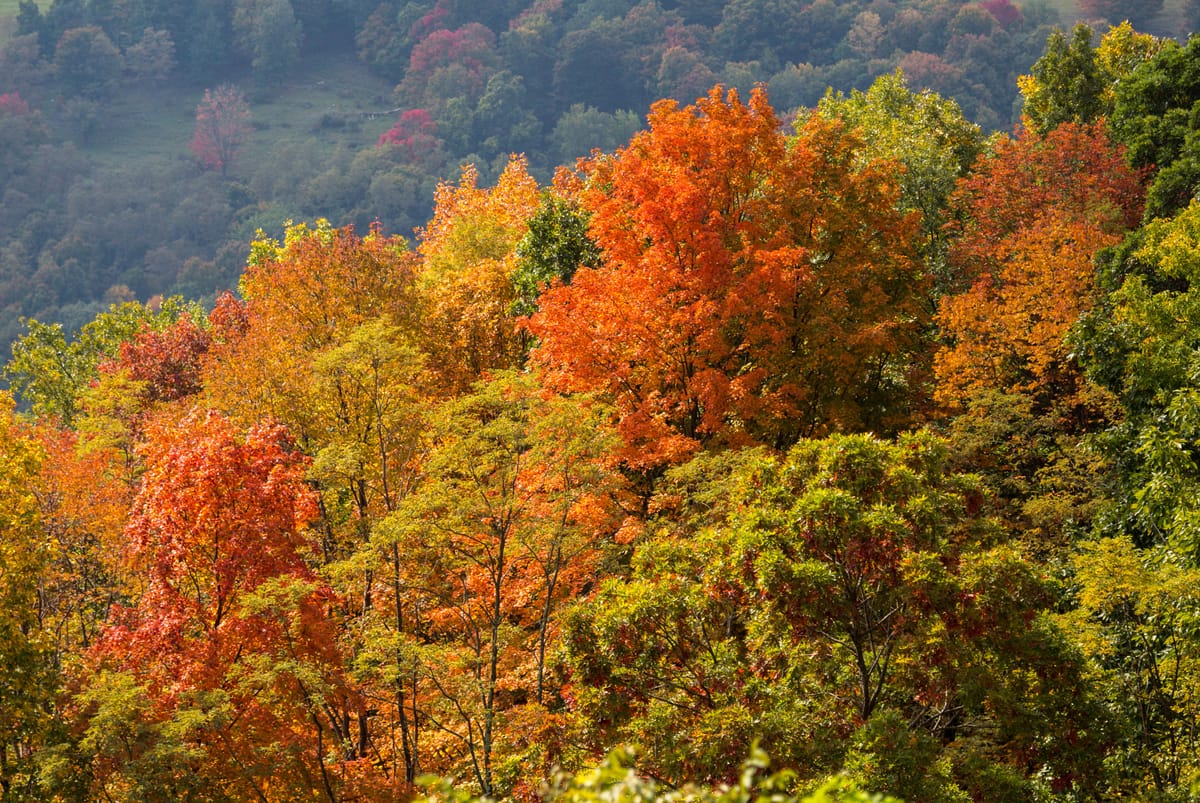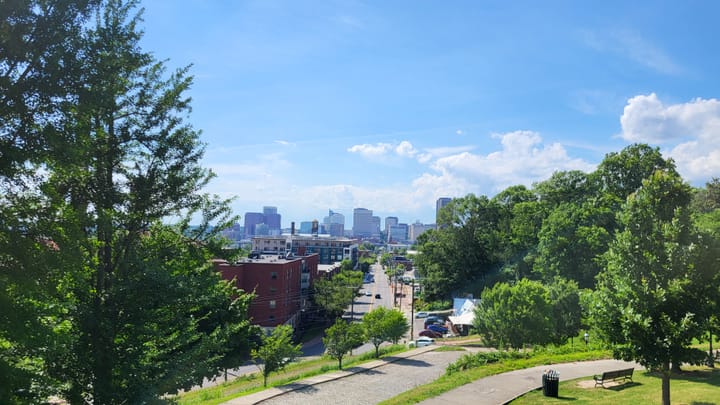
Weather updates: Fall colors in Virginia ready to put on a show
In Richmond, we have been spared the most serious impacts from the tropics this year, and we will do so again as Milton crosses Florida.
In fact, the jet stream winds will remain from the west or northwest over Virgina through this weekend, keeping Milton from a typical race up the east coast and our weather dry and cool for the next few days.
Fall colors are a little slow
Leaves are finally turning in Virginia’s Alleghenies west of the Shenandoah Valley, but the peak is still more than a week away. Color change is expected to pick up over the next couple of weeks near Skyline Drive and Shenandoah National Park, but it is a little slower this year.
Peak color is forecast in the park during the third and fourth week of October. Farther east into the forested Piedmont locations like Warrenton, Charlottesville, and Lynchburg, peak is projected a few days either side of November 1.
The weather has an impact on the colors every year, and this is no exception. The early summer drought and the warm fall nights are slowing their progress. But at the core, the shorter days (i.e. less daylight) are what drive the process.
In response to the decreasing sunlight, the veins that carry fluid in and out of the leaves begin to close off as a new layer of cells forms at the base of the leaves. This process traps sugars in the leaves and allows autumnal colors to come through as production of the green chlorophyll ceases for the season.
The sugars help produce anthocyanin — the pigment that gives many leaves their brilliant reds. And once those new cells completely seal off the leaves from their branches, the leaves are ready to fall.
During warm early fall days, lots of sugars are produced. Cool nights lead to a slower closing off of those veins, trapping sugars and heightening the colors.
Not surprisingly, a drought in late spring or early summer stresses the trees. But the warmer nights also change how sugars are produced.
Over the past three weeks, low temperatures have averaged 8.7 degrees above normal in Richmond, which is the warmest corresponding period on record. Effectively, the cool nights just have not shown up yet. This is one of the quieter impacts of the warming climate here in Virginia.
Cooperative weather ahead
The weather over the next two weeks will help. Overall, this period looks dry with pleasant days and cool nights, with no obvious signs of significant rain.
After the cool spell this week, there will be a quick spike in afternoon temperatures both Saturday and Sunday, with each day in the 70s to near 80. Then the coolest air so far this season comes in next week.
Starting around Tuesday next week, afternoons will average in the lower 60s with lows tumbling well down into the 40s. It is far too early to suggest a freeze is ahead next week, but some spots of frost in rural areas outside of the city is not an unreasonable idea.
The following weekend and early the next week (Oct 19-22) will bring another modest warm up into the 70s during the afternoons.
Parkway still closed
If you are planning a road trip to the mountains to see the fall colors in Virginia, Skyline Drive may be the way to go this year. The Blue Ridge Parkway is closed indefinitely — even here in Virginia — as hundreds of National Park Service staff assess the damage from the recent flash flooding in the southern part of the Parkway.
Interstate 64 along Afton Mountain marks the boundary between the Blue Ridge Parkway to the south and Skyline Drive to the north. Fully incorporated into Shenandoah National Park, you can access Skyline Drive at three other locations beyond the Rockfish Gap Entrance near Interstate 64.
Tropics
Once Milton leaves Florida later this week, the tropics should be quiet for a while. While unusual to have two major hurricanes in the Gulf of Mexico during October, it is not unprecedented. In the hyperactive 2020 season, when the list of hurricane names was exhausted and Greek letters had to be used, Hurricane Delta and Hurricane Zeta both reached major hurricane status there in October.
Climatologically, the busiest part of the hurricane season is from middle August to middle October, so the upcoming break is welcome and expected. But 2020 brought storms well into November, so do not sleep on the rest of the season just yet.






